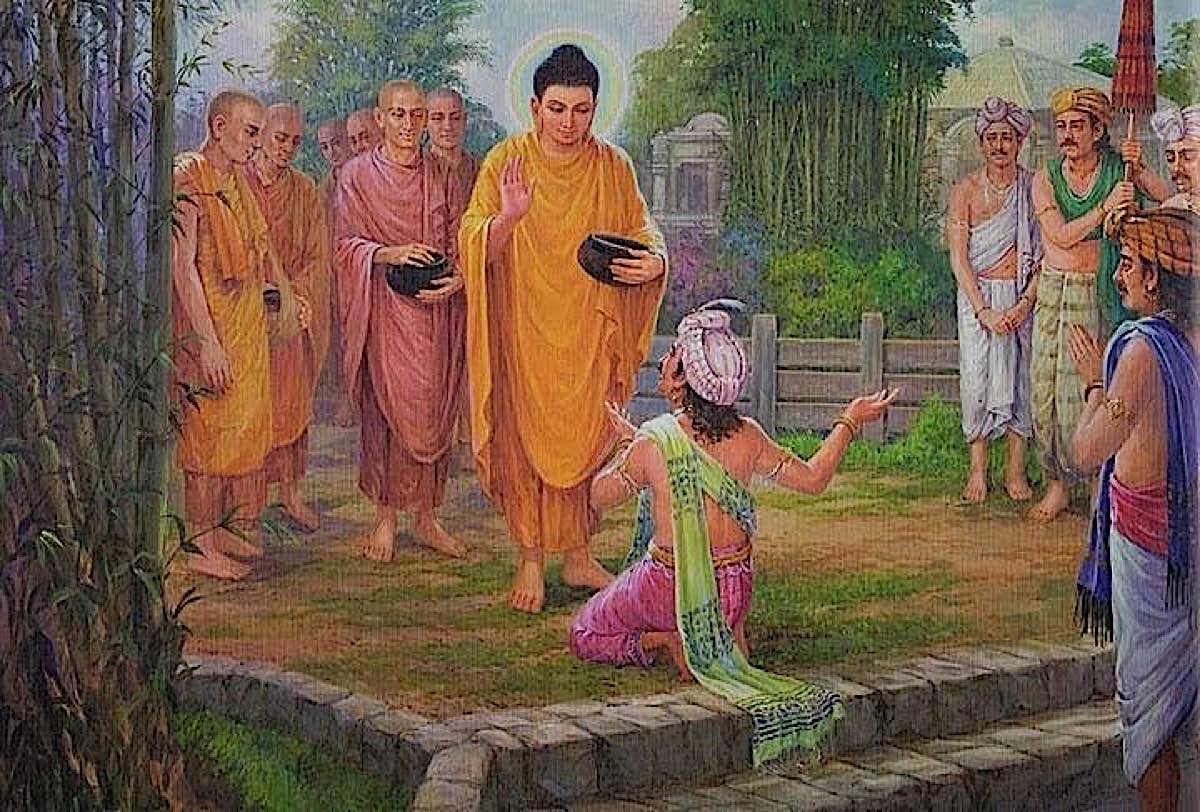
“I will teach only two things,” Buddha said. The Buddha’s primary message was always the same: end suffering by cutting the poisons. To do that, we have to first understand the nature of the poison, and then find an effective method for cutting it. In early Pali Sutta, Buddha says[1]:
“I teach only two things. Suffering and end of suffering.”— Buddha
In this series, we will look at each of the 10 poisons from different perspectives offered by diverse traditions within Buddhism. The goal is not to achieve agreement on a single definition or solution, but rather to offer many methods for cutting each poison, so that everyone can find the method — or methods — that work best for them. All are correct paths.

NOTE: There are different “lists” of Kleshas or Poisons in Buddhism. In the Mahaparanirvana Sutra there are 50! Typically we talk about the big three: Moha (delusion, confusion), Raga (greed, sensual attachment), and Dvesha (aversion, hate). The Abhidhamma Pitaka’s Dhammasangani lists the ten we are citing in this feature. In Mahayana Buddhism these are usually called “poisons” while in Pali Sutta, they’re often translated as “unwholesome roots” — at least on the key three of Moha, Raga and Dvesha. Terms and numbers aside, the poisons or unwholesome roots are the target of Buddhist practice.
The goal of Buddhism and Buddha’s teachings can be thought of as methods of “cutting” the poisons — to cut the 10 poisons of greed, hate, delusion, conceit, wrong views, doubt, laziness, restlessness, shamelessness, and recklessness.

Our mission, in the remaining ten parts of this series, is to look at the teachings on each of the poisons, one by one, from the point of view of all the traditions in Buddhism. How did the practices of the elder path differ from Mahayana methods taught by Buddha? How did these methods evolve in Vajrayana, Zen Chan, and other traditions?
Buddha identified the 10 poisons in many famous discourses. In this feature, part 2 of the series, we focus on the first of the poisons — greed. As introduced in part one (found at the link below) all of the many methods Buddha taught in his long lifetime — diverse and skillful methods focused on different aptitudes of people — are designed to cut one or more poison.
So let’s get started with greed… starting with a little sage advice from the Dalai Lama:
“True happiness comes from having a sense of inner peace and contentment, which in turn must be achieved by cultivating altruism, love and compassion, and by eliminating anger, selfishness and greed.”

Greed — today’s biggest poison?
Gautama Buddha, after his enlightenment, could see all times, past, present, future — you can call it gifted insight if you don’t like the concept of seeing the future. If he saw our time, he almost certainly focused on the poison of greed. Although greed was always a dangerous poison, leading to endless human suffering, today’s world is arguably more consumed with greed than any previous generation.

The main “cure” for greed in all Buddhist traditions
The main “cure” for greed is generosity, contentment, and detachment. We will look at each of these separately in this article, but all three are essential practices for cutting greed.
Loving Kindness, known as Metta, is the underlying motivation of Buddhist generosity, together with Karuna, or compassion. This is true in all paths and traditions of Buddhism. In Buddhas words (from the Metta Sutta or the Sutta-Nipata):
“Like a caring mother holding and guarding the life of her only child, so with a boundless heart of loving-kindness, hold yourself and all beings as your beloved children.”
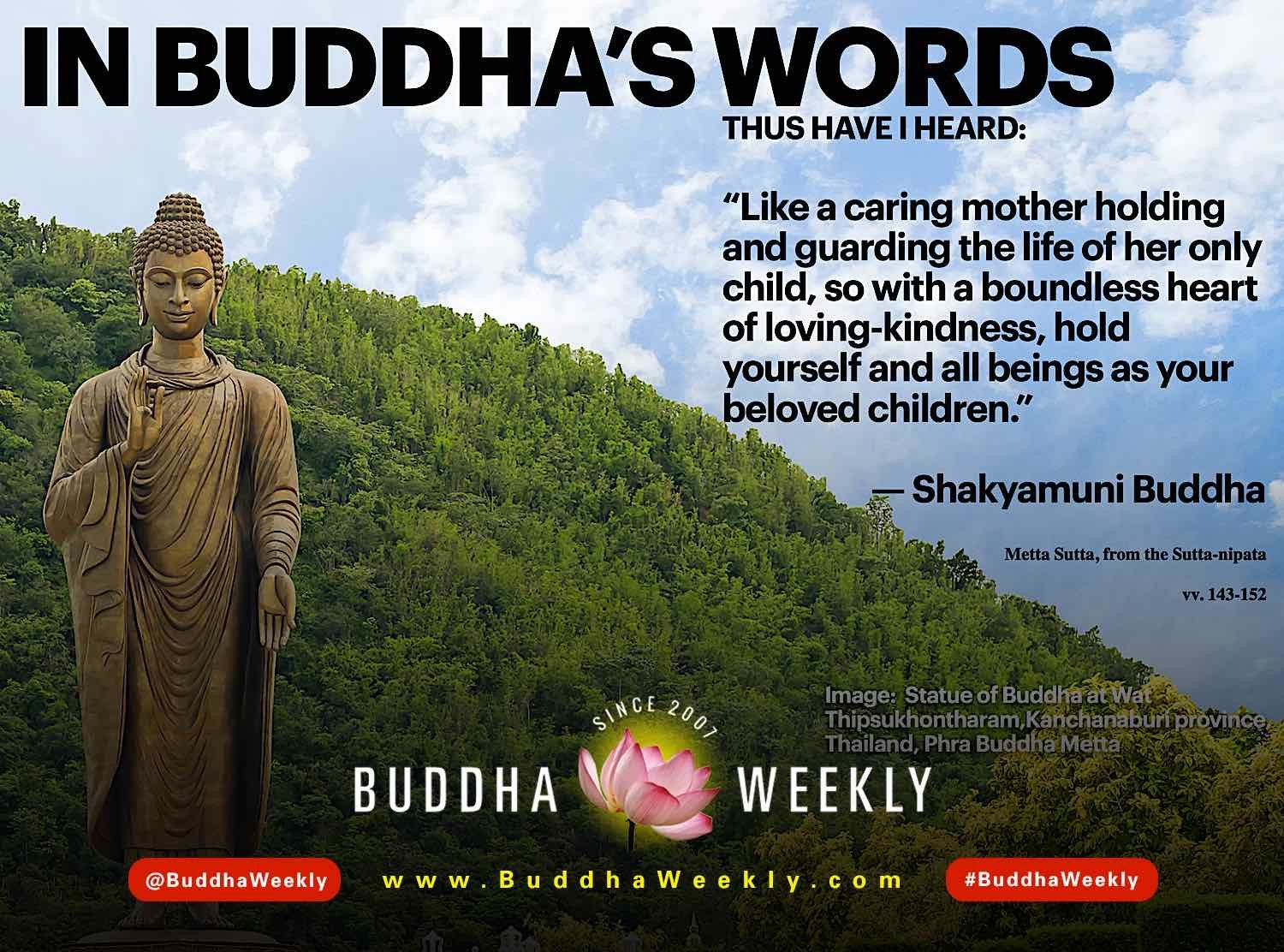
Generosity: the best medicine against greed
One of the most effective ways to cut the poison of greed is to develop the habit and quality of generosity. This is not just a feel-good practice or an act of charity; it is a skillful means for working with our own minds.
The Pali scriptures list many benefits of generosity, including:
• Increased confidence
• Improved sleep
• A calm mind
• Fewer bad dreams
• Greater beauty and attractiveness
Generosity is also praised as one activity that can lead to enlightenment, as it did for the Buddha himself.

The story of Visakha
In the Pali scriptures, there is a story of a woman named Visakha who was born into a wealthy family and married to a wealthy man. She was noted for her great generosity, and she used her wealth to support the Buddha and his monastic community. After her husband died, she became a nun and devoted her life to giving. The scriptures say that she attained enlightenment through her practice of generosity.
Loving Kindness or Metta
The driving force behind generosity, aside from crushing the poison of Greed, is our loving kindness (or Metta) towards all beings. This was exemplified in the famous story of Gautama Buddha taming the wild elephant with loving-kindness:
Nalagiri was an elephant with a bad character. Devadatta, cousin of the Buddha who was jealous of Buddha and wanted to kill him, made Nalagiri purposefully very angry and set him loose in the street in which Buddha was walking with many other monks. As Nalagiri, running wildly and trumpeting, came closer to the Buddha, the Buddha stood immovably, emanating only his loving kindness and friendliness (metta) to Nalagiri. Sensing this, Nalagiri immediately calmed down, and subsequently bowed low before the Buddha as a way of showing respect.
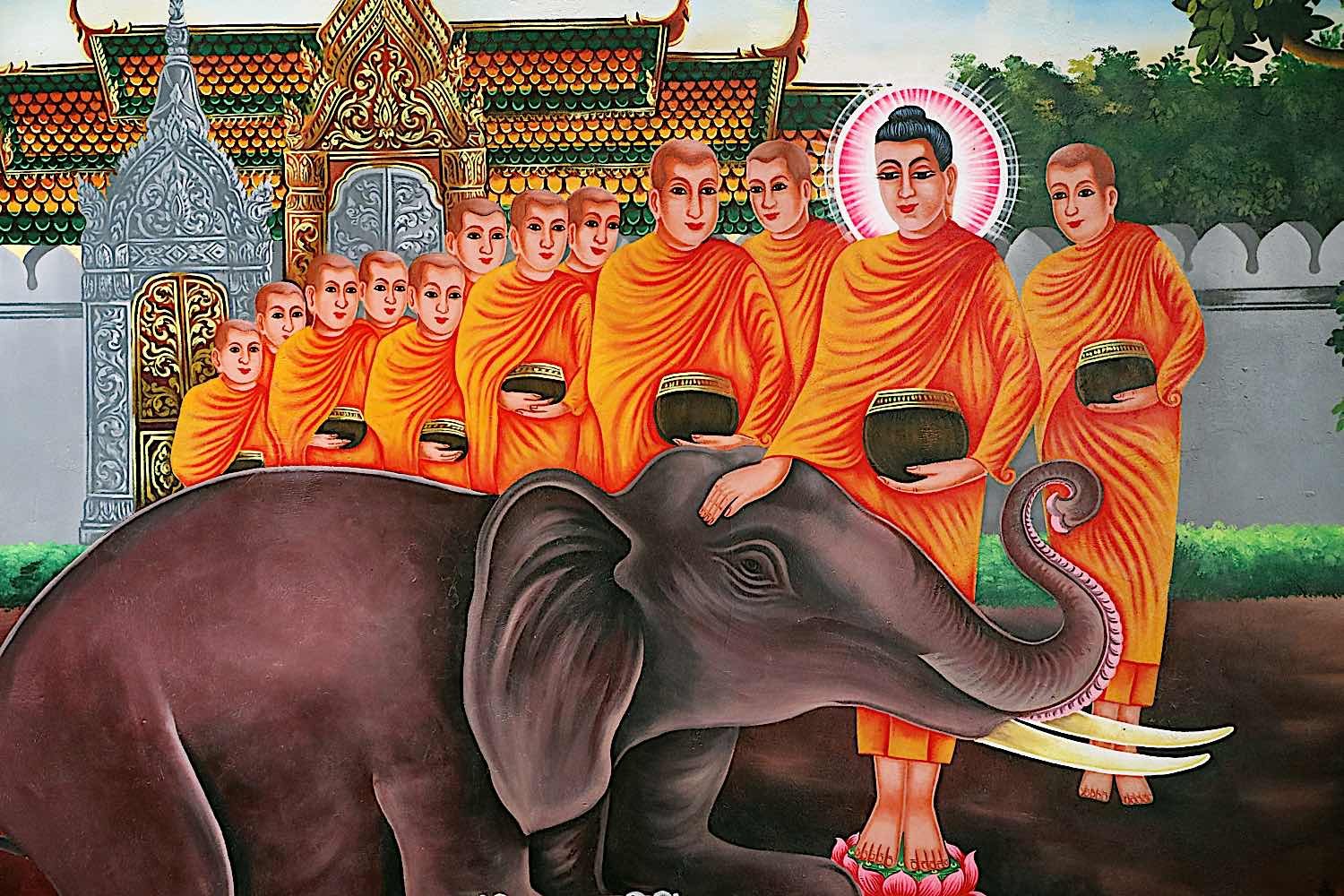
Contentment: the key to cutting greed at its root
One of the most important things we can do to cut the poison of greed is to develop contentment with what we have. This does not mean that we should never strive to improve our situation; it means that we should not allow ourselves to be controlled by a restless mind that is never satisfied.
There are many stories in the Pali scriptures of people who attained enlightenment through the practice of contentment.

The story of Mahapajapati
One of the most famous is the story of Mahapajapati, the Buddha’s aunt and adoptive mother. After she became a nun, she traveled with a group of nuns to visit the Buddha. On the way, they ran out of food and had to beg for their meal. When they arrived at the monastery, they were so hungry that they ate their food without taking time to sit down. The Buddha saw them and asked why they were in such a hurry. They explained that they were afraid they would not have enough food if they took time to sit down and eat slowly. The Buddha then taught them the importance of contentment, and they attained enlightenment.
Detachment: the secret to freedom from greed
The practice of detachment is another key to cutting the poison of greed. This does not mean that we should not care about anything; it means that we should not be attached to things. We can still enjoy the things we have, but we should not be slaves to our possessions.
There are many stories in the scriptures of people who attained enlightenment through the practice of detachment.
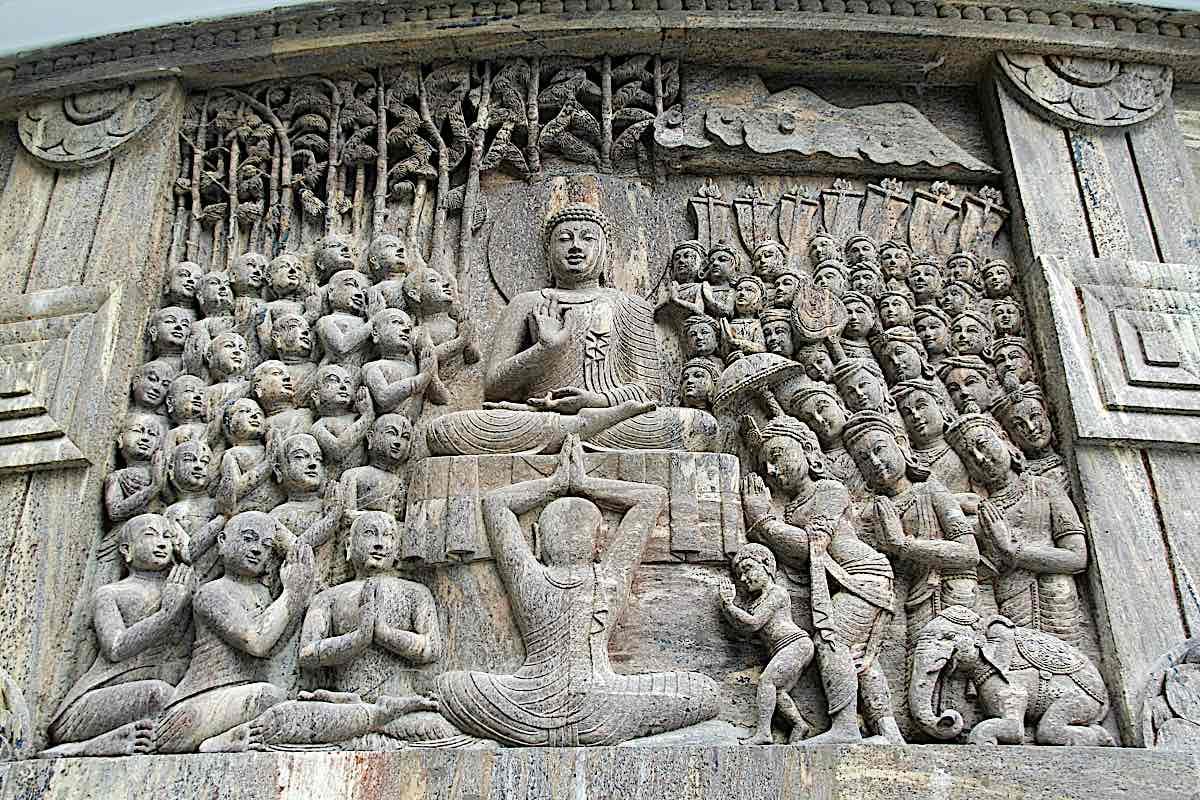
Ananda’s story of the robe
One striking story of detachment features none other than Ananda, the Buddha’s cousin, and personal attendant. He was very attached to his robes and always wanted to wear the best ones. One day, he went to see the Buddha and saw that the Buddha was wearing a robe that was much finer than any of the robes Ananda owned. He asked the Buddha where he had gotten the robe, and the Buddha told him that it had been given to him by a generous donor. Ananda then realized that his attachment to his own robes was preventing him from being as generous as he could be. He detached himself from his possessions and attained enlightenment.
The practice of detachment is also praised in the Pali scriptures as a way to overcome greed.
The story of Cunda
In one story, a man named Cunda was about to make a offering to the Buddha, but he was worried that he would become attached to the Buddha if he gave him something precious. The Buddha told him not to worry; even if he gave him the most valuable thing he had, he would not become attached to it. Cunda then gave the Buddha a priceless jewel, and he attained enlightenment.
The practice of giving, contentment, and detachment are all effective methods for cutting the poison of greed. However, they are not the only methods; there are many other ways to work with this problem. We should experiment with different approaches and see what works best for us. Remember, the goal is to develop a mind that is free from greed and attachment; any method that helps us to do that is a good method.

What is greed? And how does it cause suffering?
Greed is an emotional response characterized by feelings of wanting more — more money, more possessions, more power, more fame. It is often accompanied by a sense of dissatisfaction with what we have, and feelings of envy towards those who have more.
In Buddhism, the cause of suffering is often said to be the attachment — attachment to things that are impermanent, uncertain, and subject to change. Greed is a form of attachment; when we are attached to things, we suffer when they are taken away from us or when they don’t meet our expectations. We want more of what we are attached to.
It’s not just about material possessions
Greed isn’t just about material possessions; it can also manifest as a craving for power, fame, or even knowledge. We can be greedy for attention and approval, and we can be greedy for love and attention.
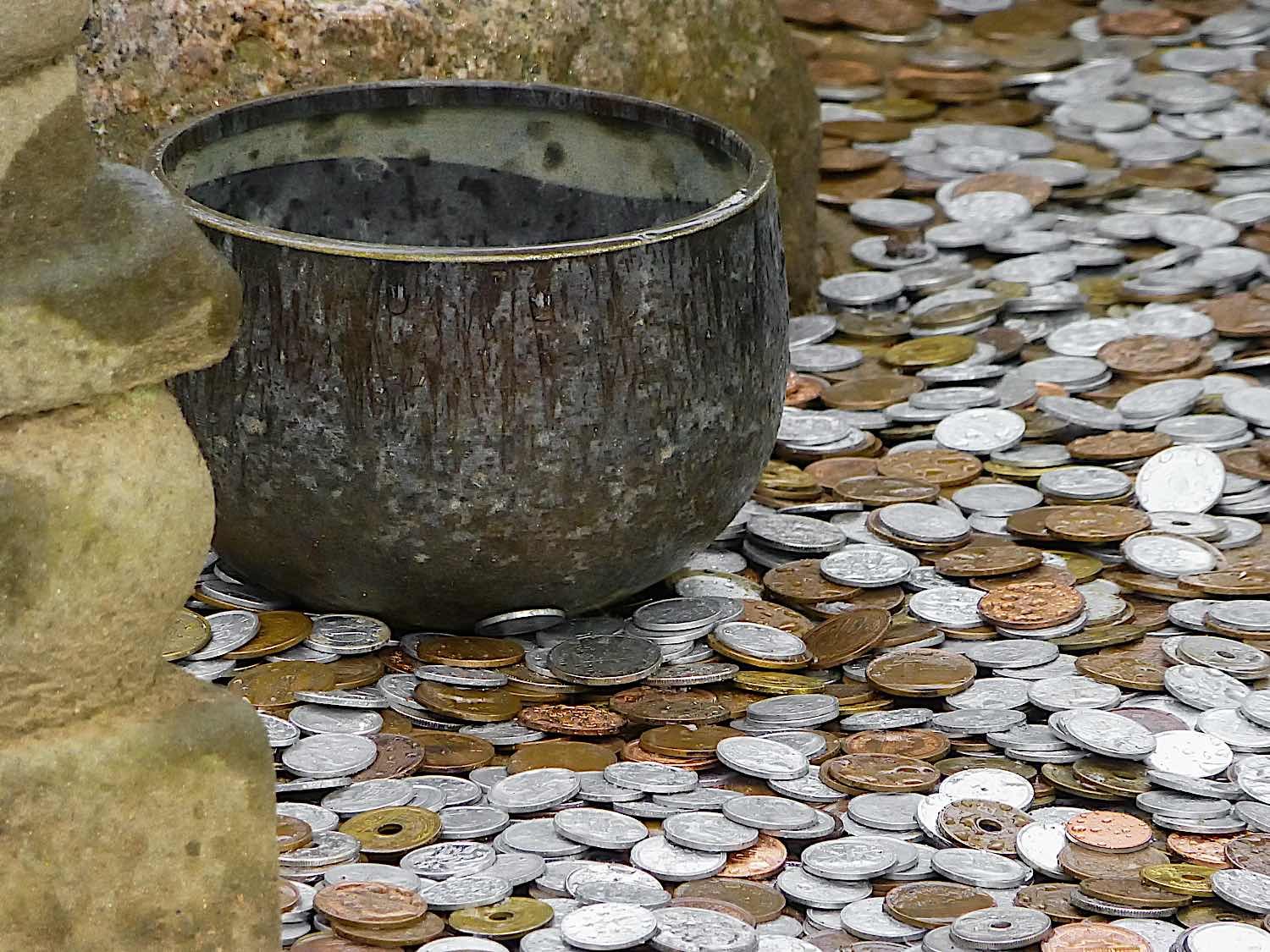
The Poison of Greed in the Early Teachings
In the early teachings, Buddha often spoke about the dangers of attachment and craving (tanha), which are closely related to greed.
For example, in the Pali canon — the earliest Buddhist scriptures — the best-known teaching is the “Four Noble Truths.” The first truth is that “suffering exists;” the second truth is that “suffering has a cause.” That cause is identified as “craving” or “attachment.”
The third truth is that “there is an end to suffering.” And the fourth truth is the “Eightfold Path” — the path that leads to the end of suffering. The Eightfold Path can be thought of as a recipe for overcoming all attachments, including greed, through virtuous conduct.
Dhammapada’s teachings on greed
One of the key teachings in the Pali canon is the “Dhammapada,” a collection of sayings attributed to the Buddha. In this text, the Buddha speaks about the dangers of attachment and craving, and how they lead to suffering.
For example, in one teaching, he says:
“From craving comes grief, from craving comes fear. When these arise, they destroy both mind and body.”
In another teaching, he says:
“Those who are slaves to craving go from house to house like a thief, seeking but not finding satisfaction.”
The Poison of Greed in the Mahayana Teachings
In the Mahayana tradition, the Bodhisattva Path, there are many texts that speak about the dangers of greed and attachment.
For example, in the “Diamond Sutra” — a well-known Mahayana text — the Buddha says:
“Greed is a disease, a cancer that eats away at our very being. It is the cause of all suffering.”
In another teaching, he says:
“All things are impermanent, and to be attached to them is to suffer.”
The Bodhisattva Path is the ultimate path of generosity. By foregoing enlightenment, the Bodhisattvas vow to stay in Samsara until all other beings are rescued. This is the ultimate cure for greed is generosity and self-sacrifice as a Bodhisattva.
The Poison of Greed in Pureland Buddhism
In Pureland Buddhism, one of the key teachings is the importance of reciting the Buddha’s name — the practice of “nembutsu.” Chanting the name praise of Amitbha Buddha has “ten great protections,” including release from all negative karmas, including greed and attachment.
A teaching video ending in the chanting of Namo Amituofo:
When we recite the Buddha’s name, we are reminded of his boundless compassion and wisdom. We are also reminded that we are not alone; we are connected to all beings, and we can rely on the Buddha for help and guidance.
This practice helps us to develop a sense of faith.
The Poison of Greed in the Vajrayana Teachings
In Vajrayana Buddhism, there are also many teachings on the dangers of greed and attachment.
For example, in the “Prajnaparamita Sutras” — one of the most famous Mahayana texts, which is an important Vajrayana Sutra — the Buddha says:
“Greed is the root of all suffering.”
In another teaching, he says:
“All things are impermanent, and to be attached to them is to suffer.”
One of the “prescribed” cures for greed is meditating on “loving kindness and compassion.”:
The Poison of Greed in Zen Chan Buddhism
In Zen Chan Buddhism, there is also a strong emphasis on the dangers of greed and attachment. As with other paths, Buddha taught mindfulness as a key method, right concentration. Mindfulness keeps us in the present moment. When you stop worrying about the “future” you have nothing to be attached to, nothing to be greedy about. At the same time, if we are concerned about the damage caused to Mother Earth, by man’s greed, mindfulness is also an “activity” when practiced correctly. The great Zen teacher Thich Nhat Hanh wrote in Peace Is Every Step:
“Mindfulness must be engaged. Once there is seeing, there must be acting. We must be aware of the real problems of the world. Then, with mindfulness, we will know what to do and what not to do to be of help.”
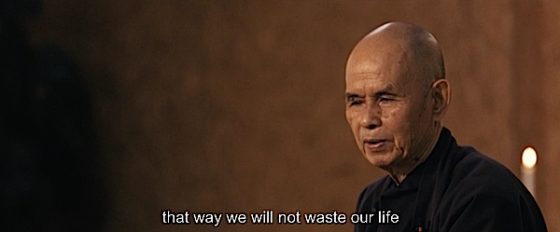
The good news is that there are many methods that Buddha taught to help us overcome greed and attachment and to find true satisfaction.
Here are some of the methods that he taught:
1. The Theravada method: In the Theravada tradition, the emphasis is on controlling our thoughts and emotions, and on practicing moderation in all things.
2. The Mahayana method: In the Mahayana tradition, the emphasis is on cultivating compassion and wisdom, and on helping others.
3. The Vajrayana method: In the Vajrayana tradition, the emphasis is on using visualization and mantra to transform our minds. For example, Ratnasambhava’s mantra while visualizing generosity.
4. The Pureland method: In the Pureland tradition, the emphasis is on chanting the name of Amitabha Buddha and on making sincere vows to be reborn in his Pure Land. By focusing sincerely on the merits and purity of Amitabha Buddha, we overcome our cravings.
5. The Zen Chan method: In the Zen Chan tradition, the emphasis is on meditation and on cultivating a mind of compassion and wisdom.
By following any of these methods — or a combination of them — we can gradually cut the poison of greed from our lives, and find true satisfaction and liberation.
Theravadan methods for cutting greed
The initial teachings on the Four Noble Truths and Eightfold Path logically and precisely map out how to escape from suffering. Depending on our level of practice, this logic may be all we need.
Greed is one of the three unwholesome roots (akusala mula), which are
- Greed (lobha)
- Hatred (dosa)
- Delusion (moha)
According to the Theravada tradition, it is possible to develop dispassion (viriya) for sensual objects and become free from greed. This doesn’t happen overnight; it’s a gradual process that requires patient endurance (khanti).
The following are some key Theravada teachings on greed:
1. The Buddha’s first teaching — the Four Noble Truths — explains that suffering arises from craving, and that we can end suffering by ending craving.
2. The Buddha’s second teaching — the Eightfold Path — shows us how to end craving and achieve liberation.
3. In the “Discourse on the Roots of Greed” (Mula Sutta), the Buddha says that there are three roots of greed: attachment to sensual pleasures, attachment to existence, and ignorance.
4. In the “Discourse on the Fetter of Greed” (Samyojana Sutta), the Buddha says that there are four fetters that bind us to samsara: attachment to sensual pleasures, attachment to existence, doubt, and wrong views.
5. In the “Discourse on the Fire Sermon” (Adittapariyaya Sutta), the Buddha says that all things are impermanent, and that to be attached to them is to suffer. He also says that we can find true happiness by letting go of our attachments.
By following the Theravada path, we can gradually cut the poison of greed from our lives, and find true liberation.
Mahayana teachings on cutting greed
In the Mahayana tradition, the emphasis is on cultivating compassion and wisdom, and on helping others. The first of the six paramitas is Generosity. In different ways, all of the Paramitas help us to cut greed, but especially generosity.
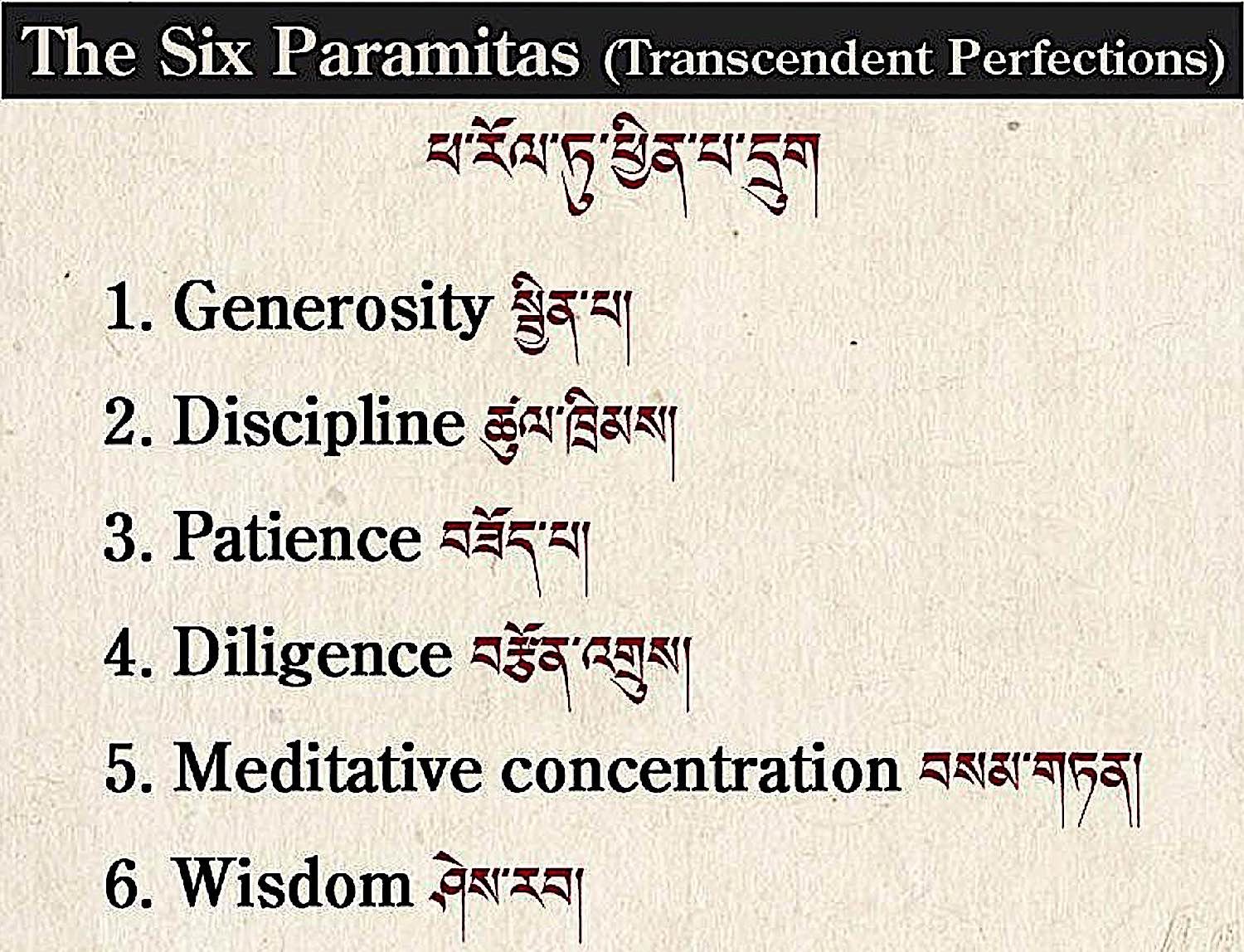
The following are some key Mahayana teachings on greed:
1. In the “Sutra of the Bodhisattva’s Way of Life” (Bodhisattvacarya-avatara Sutra), the Buddha says that a bodhisattva is someone who is motivated by compassion, and who strives to help others.
2. In the “Sutra of Golden Light” (Suvarnaprabhasa Sutra), the Buddha says that we can overcome our cravings by cultivating wisdom.
3. In the “Heart Sutra”, the Buddha says that all things are empty, and that we can find true liberation by letting go of our attachments.
Entering the Way of the Bodhisattva: Bodhicharyavatara
Bodisattva’s Way of Life: helping others cuts greed. The Bodhisattva heroically gives up their own peace for the sake of others.
The Bodhisattvacaryāvatāra or Bodhicaryāvatāra (Sanskrit: बोधिसत्त्वाचर्यावतार; Tibetan: བྱང་ཆུབ་སེམས་དཔའི་སྤྱོད་པ་ལ་འཇུག་པ་ byang chub sems dpa’i spyod pa la ‘jug pa;Chinese: 入菩薩行論; Japanese: 入菩薩行論) was written in 700AD by Śāntideva. This is ultimately the entire path of the Bodhisattva, which certainly can be said to be the path of ultimate generosity, a cure for greed. In this amazing text, Santideva covers:
- The benefits of bodhicitta (the wish to reach full enlightenment for others)
- Purifying bad deeds
- Adopting the spirit of enlightenment
- Using conscientiousness
- Guarding awareness
- The practice of patience
- The practice of joyous effort
- The practice of meditative concentration
- The perfection of wisdom
- Dedication
In short, through cultivating bodhicitta — the wish to reach full enlightenment for the sake of others — we can cut the poison of greed from our lives, and find true liberation.
By following the Mahayana Bodhisattva path, we can gradually cut the poison of greed from our lives, and find true liberation.
Tonglen practice is a Vajrayana meditation on “giving and taking” — giving our happiness and taking in the suffering of others. This vast Mahayana generosity is a “cure” for the poison of greed. Here is a guided meditation from Venerable Zasep Rinpoche:
Vajrayana methods for cutting greed
Vajrayana is not separate from Mahayana. Vajrayana teachings build on the foundations of both Theravadan and Mahayana, including Pureland and Chan/Zen. The key teaching methods are progressive and highly visualized.
In the Vajrayana tradition, the emphasis is on using visualization and mantra to transform our minds — but anchored in the same principles taught in Mahayana.
For example, visualizing red Amitabha while chanting his mantra and visualizing generosity. (The poison of greed is the “province” of Amitabha Buddha. See below.)
The following are some key Vajrayana teachings on greed:
1. In the “Tantra of Great Compassion” (Mahakaruna-tantra), the Buddha says that we can find true liberation by cultivating compassion.
2. In the “Tantra of the Secret Essence” (Guhyasamaja-tantra), the Buddha says that we can find true liberation by cultivating wisdom.
3. In the “Tantra of the Diamond Way” (Vajrabhairava-tantra), the Buddha says that we can find true liberation by cultivating compassion and wisdom.
Ngondro, and particularly prostrations, is one of the remedies for pride and greed:
Chod Practice: cut, cut, cut
Vajrayana also has, within it, a very structured approach to every cutting method. One famous practice, for example, is Chod practice, which requires advanced training, empowerment and visualizations under the guidance of a teacher. In this method, the practitioner visualizes the ultimate generosity method: cutting up one’s own body, transforming into blessed offerings to give to all sentient beings. (Obviously not literally cutting up one’s body — this is a visualization practice!) Vajrayana extensively focuses on visualization to help overcome attachments and to help us glimpse “true nature of reality.”
In Vajrayana, there are also many yidam deity practices that focus on cutting different types of attachments. The main yidam deities associated with cutting greed are Manjushri, focused on Wisdom, Chenrezig or Avalokiteshvara, focused on Compassion and Green Tara focused on Activities — including the activities of generosity.
In Vajrayana Buddhism, there are many other teachings and practices that focus on cutting the poison of greed.
Venerable Zasep Rinpoche demonstrates Chod, the cutting of ego, which is also considered the ultimate act of generosity, useful for cutting greed:
Prostrations and Ngondro in Vajrayana
For example, one practice is “ngondro,” which consists of four preliminary practices that help us to purify our minds and prepare for more advanced tantric practices. One of those preliminary practices is called “prostrations;” in this practice, we prostrate ourselves before a Buddha statue or image, and recite certain prayers or mantras. This helps us to develop humility and generate a sense of respect for all beings.
Another practice that can help us to cut the poison of greed is visualization. In some visualization practices, we imagine giving away all of our possessions to others; in other visualizations, we imagine taking on the suffering of all beings. These practices help us to develop a sense of generosity and compassion, and to let go of our attachment to things.
The practice of Tonglen in Vajrayana
In Vajrayana, a very popular practice is the generosity visualizations of Tonglen.
This practice is said to be the quickest way to develop bodhichitta, or the mind of enlightenment. The practice involves visualizing taking on the suffering of all beings, and then giving away our own happiness and good fortune to them. This helps us to develop compassion and generate a deep feeling of love for all beings.
Tonglen is a very powerful practice, but it is also one of the most difficult. It requires a great deal of courage and faith to imagine taking on the suffering of others, and then actually doing it. But if we can overcome our fears and doubts, Tonglen can be an extremely effective method for cutting the poison of greed from our lives. By following the Vajrayana path, we can gradually cut the poison of greed from our lives, and find true liberation.
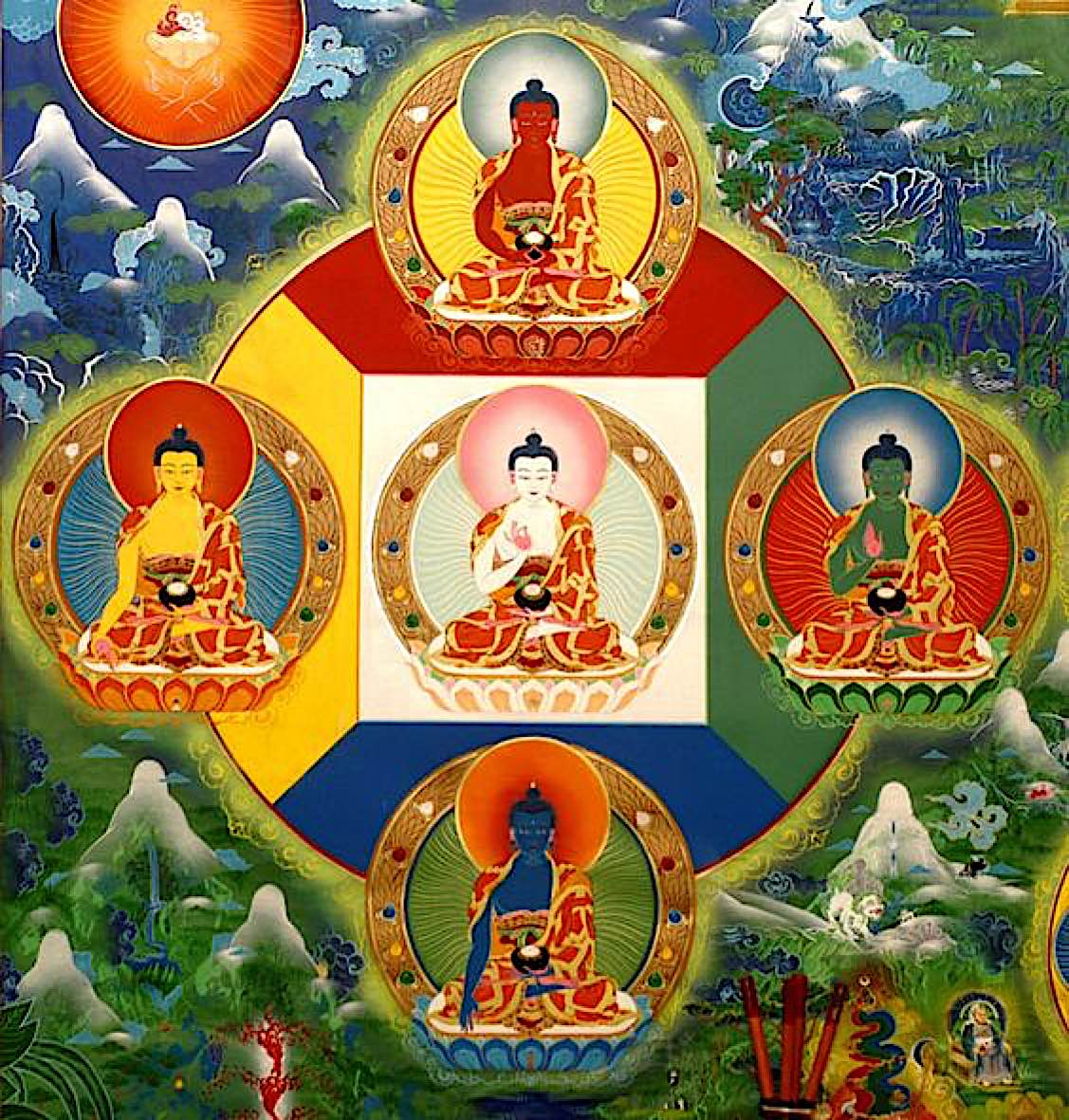
The Four Buddha Families
The role of the poisons, especially the notable “five poisons” — the most dangerous of the overall ten poisons — take on personas in Vajrayana. This especially takes the form of the five Buddha families, one focused on each of these five poisons. The five Buddhas are:
- Vairochana, who represents the poison of Ignorance;
- Amitabha, who represents the poison of Hatred or Aversion;
- Ratnasambhava, who represents the Poison of Pride;
- Amoghasiddhi, who represents the Poison of Jealousy; and
- Aksobhya, who overcomes the Poison of Hate, also overcome greed.
Each of these five poisons can be transformed into its corresponding positive quality through the practice of tantra. For example, Ignorance can be transformed into Wisdom, Hatred can be transformed into Compassion, and so on. When we practice tantra, we are working with the energy of the poisons, and transforming them into their positive counterparts.
This is a very powerful process, because it allows us to work with our poison energies directly, and to transform them into something positive. It is said that the tantric path is the quickest way to Enlightenment, because we are working with our negative energies directly, rather than trying to suppress them or ignore them.
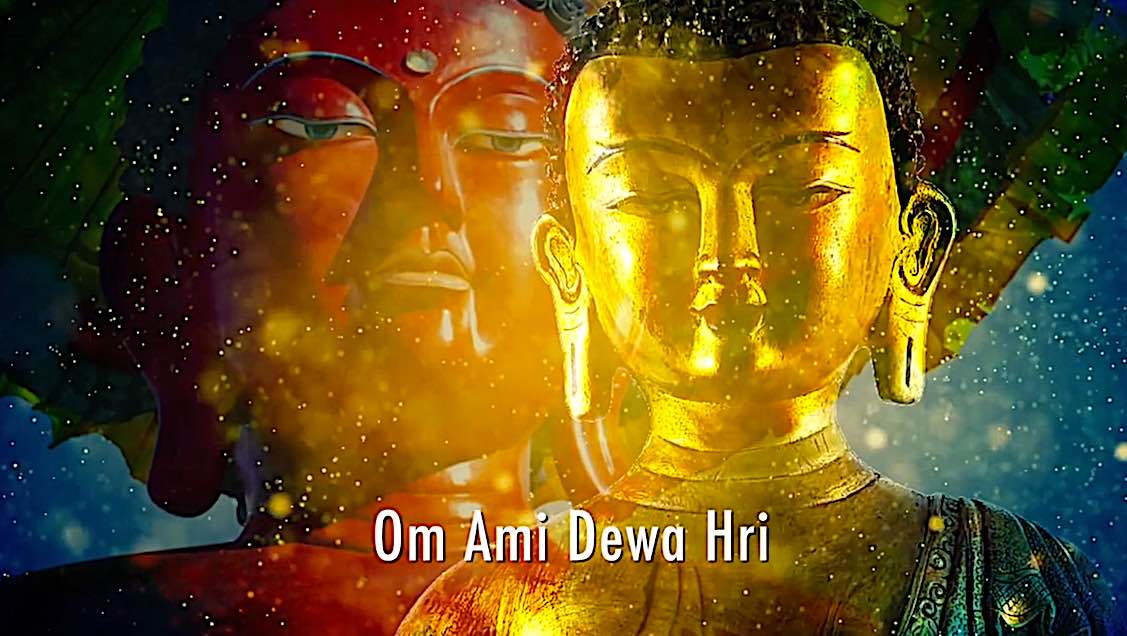
All five of the Buddhas can help us overcome the poison of greed. For example, Ratnasambhava of the Jewel family with the practice of generosity, and Amitabha of the Lotus family with the practice of discriminating awareness. Each Buddha represents a different wisdom:
Amitabha Buddha: the wisdom of discernment overcomes greed with discriminating awareness
- Ratnasambhava Buddha: wisdom of equality overcomes greed with generosity.
- Amoghasiddhi Buddha: all accomplishing wisdom overcomes jealousy which can also lead to greed with the cure of generous activity.
- Vairochana Buddha: Dharmadatu wisdom overcomes greed by showing us the true nature of our delusions.
- Akshobhya Buddha: his mirror-like wisdom helps us see-through the illusion of “useless riches.”
The mantras of Amitabha Buddha is helpful as a practice, while visualizing the Buddha. In this video, the mantra is chanted beautifully by the amazing Yoko Dharma:
Amitabha — discriminating awareness to overcome greed
For example, the practice of Amitabha is very popular in Mahayana Buddhism, and it is especially effective for cutting the poison of greed. Amitabha is the Buddha of Infinite Light, and he represents the Poison of Hatred. When we visualize Amitabha, we are visualizing a being who is infinitely compassionate and loving. By doing this , we are training our mind to develop these qualities as well.
Ratnasambhava — generosity for overcoming greed
Ratnasambhava can help us overcome greed with generosity. Ratnasambhava is the Buddha of Jewels, and he represents the Poison of Pride. When we visualize Ratnasambhava, we are reminded that all beings are equal, and that we should share our wealth and resources with others. This helps us to overcome greed, because we realize that we don’t need to hoard things for ourselves.
Amoghasiddhi — generous activity to overcome jealousy
Jealousy is a close relative of greed, and Amoghasiddhi can help us overcome both with generous activity. Amoghasiddhi is the Buddha of Infinite Activity, and he represents the Poison of Jealousy. When we visualize Amoghasiddhi, we are reminded that we can accomplish anything we set our mind to. This helps us to overcome jealousy, because we realize that we don’t need to compare ourselves to others.
Vairochana — the true nature of delusions for overcoming greed
The Poison of Greed is often caused by our delusions about the things we want. Vairochana can help us overcome these delusions by showing us the true nature of things. Vairochana is the Buddha of Clear Light, and he represents the Poison of Ignorance. When we visualize Vairochana, we are reminded that our desires are often based on false assumptions. This helps us to overcome greed, because we realize that we don’t need to chase after things that don’t exist.
Akshobhya — seeing through illusions for overcoming greed
Akshobhya can help us overcome greed by showing us the illusory nature of “useless riches.” Akshobhya is the Buddha of Immovable Wisdom, and he represents the Poison of Greed. When we visualize Akshobhya, we are reminded that the things we desire often have no lasting value. This helps us to overcome greed, because we realize that we don’t need to cling to things that will eventually disappear.
Tantric path — working with our poison energies directly
The tantric path is the most direct path for working with our Poison energies. In tantra, we work directly with the Poison of Greed by using it as a fuel for our practice. We do this by visualizing the Poison of Greed as a white light, and then using that light to power our practice. This helps us to overcome greed, because we are using our greed to fuel our practice, instead of letting it control us.
Pureland methods for cutting greed
In the Pureland tradition, the emphasis is on reciting Amitabha Buddha’s name, and on making aspirational prayers to be reborn in his Pure Land.
The following are some key Pureland teachings on greed:
1. In the “Sutra of Amitabha” (Amitabha Sutra), the Buddha says that we can be reborn in Amitabha Buddha’s Pure Land if we recite his name with sincere faith.
2. In the “Contemplation Sutra” (Visualization Sutra), the Buddha says that we can make aspirational prayers to be reborn in Amitabha Buddha’s Pure Land.
3. In the “Greater Contemplation Sutra” (Larger Sukhavati-vyuha Sutra), the Buddha says that those who are reborn in Amitabha Buddha’s Pure Land will be free from suffering and will cultivate wisdom and compassion.
By following the Pureland path, we can gradually cut the poison of greed from our lives and find true liberation.
How can simply chanting Namo Amituofo help us overcome or cut greed? Like any mindfulness practice, it helps reduce our clinging and grasping tendency. By visualizing the Buddha’s Pureland and the glorious Buddha Amitabha we can help settle our own mind.
Redirecting our attention in this way can help us develop single-minded concentration. When we have some stability of mind, we can then begin to reflect on the causes of our greed, such as wanting more sense pleasures or wanting to avoid pain. We may also start to see how our grasping and clinging leads to suffering. Recognizing these causes and conditions can help us develop renunciation and letting go.
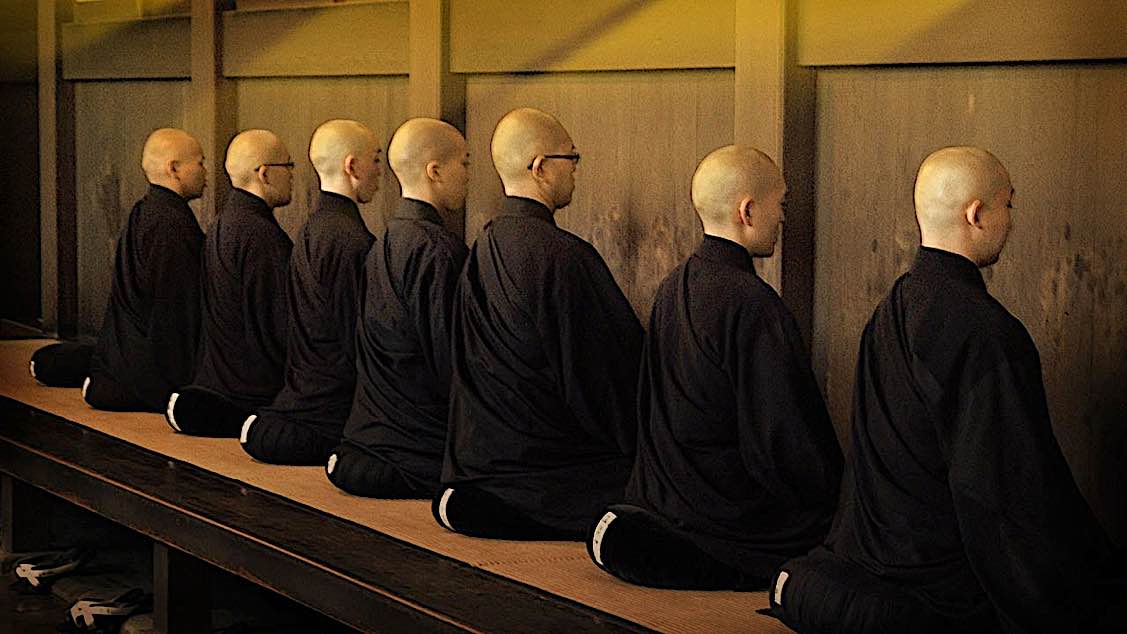
Zen Chan methods for cutting Greed
In Zen Chan, the emphasis is on using meditation to achieve a state of mind where we are no longer attached to anything. This is known as “None-attachment” or “No-mind”.
The following are some key Zen Chan teachings on greed:
1. In the “Diamond Sutra”, the Buddha says that we can find true liberation by letting go of our attachments.
2. In the “Heart Sutra”, the Buddha says that all things are empty, and that we can find true liberation by letting go of our attachments.
3. In the ” Platform Sutra”, the Sixth Patriarch Hui Neng says that we can find true liberation by cultivating wisdom.
By following the Zen Chan path, we can gradually cut the poison of greed from our lives, and find true liberation.
Zen Chan methods for cutting greed help cut grasping by “just sitting.” Just sitting mindfully is an advanced practice — it sounds simple, but takes years of discipline and practice to perfect. When we can just sit without thinking, without attachment, then we have achieved a state of “no-mind.” This is the ultimate goal of Zen Chan practice — to find true liberation by letting go of all attachments.
These are some of the key teachings on greed from the Theravada, Mahayana, Vajrayana, Pureland and Zen Chan traditions. By following any of these paths, we can gradually cut the poison of greed from our lives and find true liberation.
A meditation: asking ourselves key questions about greed
It can be helpful to take a few minutes, meditatively, and ask ourselves some key questions in our own meditative sessions:
-What are some of the dangers of greed?
-How can greed lead to suffering?
-What are some of the things we can do to overcome greed?
-What are some of the benefits of overcoming greed?
-What is the difference between wanting something and being attached to it?
-How can we develop contentment with what we have?
-How can we practice detachment from our possessions?
-What is the difference between giving and being generous?
-Are there any other methods for cutting the poison of greed that you know of? Feel free to share your own experiences or stories.
NOTES
[1] Greed, Hatred, Delusion: The Three Poisons in Theravada Buddhism https://drarisworld.wordpress.com/2020/09/28/greed-hatred-delusion-the-three-poisons-in-theravada-buddhism/
[2] Photo credit: By User:BPG – Own work, CC BY-SA 2.5, https://commons.wikimedia.org/w/index.php?curid=1889325

